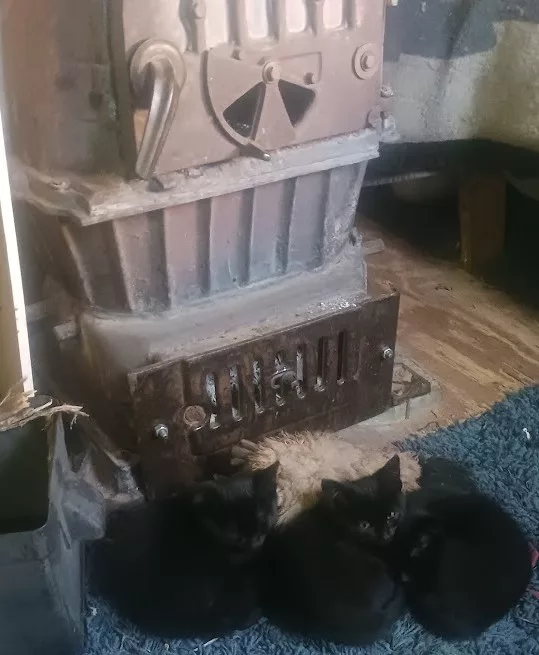Review:
Going Infinite, by Michael Lewis
| Publisher: |
W.W. Norton & Company |
| Copyright: |
2023 |
| ISBN: |
1-324-07434-5 |
| Format: |
Kindle |
| Pages: |
255 |
My first reaction when I heard that Michael Lewis had been embedded with
Sam Bankman-Fried working on a book when Bankman-Fried's cryptocurrency
exchange FTX collapsed into bankruptcy after losing billions of dollars of
customer deposits was "holy shit, why would you talk to
Michael
Lewis about your dodgy cryptocurrency company?" Followed immediately by
"I have to read this book."
This is that book.
I wasn't sure how Lewis would approach this topic. His normal (although
not exclusive) area of interest is financial systems and crises, and there
is lots of room for multiple books about cryptocurrency fiascoes using
someone like Bankman-Fried as a pivot. But
Going Infinite is not
like
The Big Short or Lewis's other
financial industry books. It's a nearly straight biography of Sam
Bankman-Fried, with just enough context for the reader to follow his life.
To understand what you're getting in
Going Infinite, I think it's
important to understand what sort of book Lewis likes to write. Lewis is
not exactly a reporter, although he does explain complicated things for a
mass audience. He's primarily a storyteller who collects people he finds
fascinating. This book was therefore never going to be like, say,
Carreyrou's
Bad Blood or Isaac's
Super Pumped. Lewis's interest is not
in a forensic account of how FTX or Alameda Research were structured. His
interest is in what makes Sam Bankman-Fried tick, what's going on inside
his head.
That's not a question Lewis directly answers, though. Instead, he shows
you Bankman-Fried as Lewis saw him and was able to reconstruct from
interviews and sources and lets you draw your own conclusions. Boy did I
ever draw a lot of conclusions, most of which were highly unflattering.
However, one conclusion I didn't draw, and had been dubious about even
before reading this book, was that Sam Bankman-Fried was some sort of
criminal mastermind who intentionally plotted to steal customer money.
Lewis clearly doesn't believe this is the case, and with the caveat that
my study of the evidence outside of this book has been spotty and
intermittent, I think Lewis has the better of the argument.
I am utterly fascinated by this, and I'm afraid this review is going to
turn into a long summary of my take on the argument, so here's the capsule
review before you get bored and wander off: This is a highly entertaining
book written by an excellent storyteller. I am also inclined to believe
most of it is true, but given that I'm not on the jury, I'm not that
invested in whether Lewis is too credulous towards the explanations of the
people involved. What I do know is that it's a fantastic yarn with
characters who are too wild to put in fiction, and I thoroughly enjoyed
it.
There are a few things that everyone involved appears to agree on, and
therefore I think we can take as settled. One is that Bankman-Fried, and
most of the rest of FTX and Alameda Research, never clearly distinguished
between customer money and all of the other money. It's not obvious that
their home-grown accounting software (written entirely by one person! who
never spoke to other people! in code that no one else could understand!)
was even capable of clearly delineating between their piles of money.
Another is that FTX and Alameda Research were thoroughly intermingled.
There was no official reporting structure and possibly not even a coherent
list of employees. The environment was so chaotic that lots of people,
including Bankman-Fried, could have stolen millions of dollars without
anyone noticing. But it was also so chaotic that they could, and did,
literally misplace millions of dollars by accident, or because
Bankman-Fried had problems with object permanence.
Something that was previously less obvious from news coverage but that
comes through very clearly in this book is that Bankman-Fried seriously
struggled with normal interpersonal and societal interactions. We know
from multiple sources that he was diagnosed with ADHD and depression
(Lewis describes it specifically as anhedonia, the inability to feel
pleasure). The ADHD in Lewis's account is quite severe and does not sound
controlled, despite medication; for example, Bankman-Fried routinely
played timed video games while he was having important meetings, forgot
things the moment he stopped dealing with them, was constantly on his
phone or seeking out some other distraction, and often stimmed (by
bouncing his leg) to a degree that other people found it distracting.
Perhaps more tellingly, Bankman-Fried repeatedly describes himself in
diary entries and correspondence to other people (particularly Caroline
Ellison, his employee and on-and-off secret girlfriend) as being devoid of
empathy and unable to access his own emotions, which Lewis supports with
stories from former co-workers. I'm very hesitant to diagnose someone via
a book, but, at least in Lewis's account, Bankman-Fried nearly walks down
the symptom list of antisocial personality disorder in his own description
of himself to other people. (The one exception is around physical
violence; there is nothing in this book or in any of the other reporting
that I've seen to indicate that Bankman-Fried was violent or physically
abusive.) One of the recurrent themes of this book is that Bankman-Fried
never saw the point in following rules that didn't make sense to him or
worrying about things he thought weren't important, and therefore simply
didn't.
By about a third of the way into this book, before FTX is even properly
started, very little about its eventual downfall will seem that
surprising. There was no way that Sam Bankman-Fried was going to be able
to run a successful business over time. He was extremely good at
probabilistic trading and spotting exploitable market inefficiencies, and
extremely bad at essentially every other aspect of living in a society
with other people, other than a hit-or-miss ability to charm that worked
much better with large audiences than one-on-one. The real question was
why anyone would ever entrust this man with millions of dollars or decide
to work for him for longer than two weeks.
The answer to those questions changes over the course of this story.
Later on, it was timing. Sam Bankman-Fried took the techniques of high
frequency trading he learned at Jane Street Capital and applied them to
exploiting cryptocurrency markets at precisely the right time in the
cryptocurrency bubble. There was far more money than sense, the most
ruthless financial players were still too leery to get involved, and a
rising tide was lifting all boats, even the ones that were piles of
driftwood. When cryptocurrency inevitably collapsed, so did his
businesses. In retrospect, that seems inevitable.
The early answer, though, was effective altruism.
A full discussion of effective altruism is beyond the scope of this
review, although Lewis offers a decent introduction in the book. The
short version is that a sensible and defensible desire to use stronger
standards of evidence in evaluating charitable giving turned into a
bizarre navel-gazing exercise in making up statistical risks to
hypothetical future people and treating those made-up numbers as if they
should be the bedrock of one's personal ethics. One of the people most
responsible for this turn is an Oxford philosopher named
Will MacAskill.
Sam Bankman-Fried was already obsessed with utilitarianism, in part due to
his parents' philosophical beliefs, and it was a presentation by Will
MacAskill that converted him to the effective altruism variant of extreme
utilitarianism.
In Lewis's presentation, this was like joining a cult. The impression I
came away with feels like something out of a
science fiction novel: Bankman-Fried knew there was some serious gap in
his thought processes where most people had empathy, was deeply troubled
by this, and latched on to effective altruism as the ethical framework to
plug into that hole. So much of effective altruism sounds like a con game
that it's easy to think the participants are lying, but Lewis clearly
believes Bankman-Fried is a true believer. He appeared to be sincerely
trying to make money in order to use it to solve existential threats to
society, he does not appear to be motivated by money apart from that goal,
and he was following through (in bizarre and mostly ineffective ways).
I find this particularly believable because effective altruism as a belief
system seems designed to fit Bankman-Fried's personality and justify the
things he wanted to do anyway. Effective altruism says that empathy is
meaningless, emotion is meaningless, and ethical decisions should be made
solely on the basis of expected value: how much return (usually in safety)
does society get for your investment. Effective altruism says that all
the things that Sam Bankman-Fried was bad at were useless and unimportant,
so he could stop feeling bad about his apparent lack of normal human
morality. The only thing that mattered was the thing that he was
exceptionally good at: probabilistic reasoning under uncertainty. And,
critically to the foundation of his business career, effective altruism
gave him access to investors and a recruiting pool of employees, things he
was entirely unsuited to acquiring the normal way.
There's a ton more of this book that I haven't touched on, but this review
is already quite long, so I'll leave you with one more point.
I don't know how true Lewis's portrayal is in all the details. He took
the approach of getting very close to most of the major players in this
drama and largely believing what they said happened, supplemented by
startling access to sources like Bankman-Fried's personal diary and
Caroline Ellis's personal diary. (He also seems to have gotten extensive
information from the personal psychiatrist of most of the people involved;
I'm not sure if there's some reasonable explanation for this, but based
solely on the material in this book, it seems to be a shocking breach of
medical ethics.) But Lewis is a storyteller more than he's a reporter,
and his bias is for telling a great story. It's entirely possible that
the events related here are not entirely true, or are skewed in favor of
making a better story. It's certainly true that they're not the complete
story.
But, that said, I think a book like this is a useful counterweight to the
human tendency to believe in moral villains. This is, frustratingly, a
counterweight extended almost exclusively to higher-class white people
like Bankman-Fried. This is infuriating, but that doesn't make it wrong.
It means we should extend that analysis to more people.
Once FTX collapsed, a lot of people became very invested in the idea that
Bankman-Fried was a straightforward embezzler. Either he intended from
the start to steal everyone's money or, more likely, he started losing
money, panicked, and stole customer money to cover the hole. Lots of
people in history have done exactly that, and lots of people involved in
cryptocurrency have tenuous attachments to ethics, so this is a believable
story. But people are complicated, and there's also truth in the maxim
that every villain is the hero of their own story. Lewis is after a less
boring story than "the crook stole everyone's money," and that leads to
some bias. But sometimes the less boring story is also true.
Here's the thing: even if Sam Bankman-Fried never intended to take any
money, he clearly did intend to mix customer money with Alameda Research
funds. In Lewis's account, he never truly believed in them as separate
things. He didn't care about following accounting or reporting rules; he
thought they were boring nonsense that got in his way. There is obvious
criminal intent here in any reading of the story, so I don't think Lewis's
more complex story would let him escape prosecution. He refused to follow
the rules, and as a result a lot of people lost a lot of money. I think
it's a useful exercise to leave mental space for the possibility that he
had far less obvious reasons for those actions than that he was a simple
thief, while still enforcing the laws that he quite obviously violated.
This book was great. If you like Lewis's style, this was some of the best
entertainment I've read in a while. Highly recommended; if you are at all
interested in this saga, I think this is a must-read.
Rating: 9 out of 10

 Like each month, have a look at the work funded by Freexian s Debian LTS offering.
Like each month, have a look at the work funded by Freexian s Debian LTS offering.
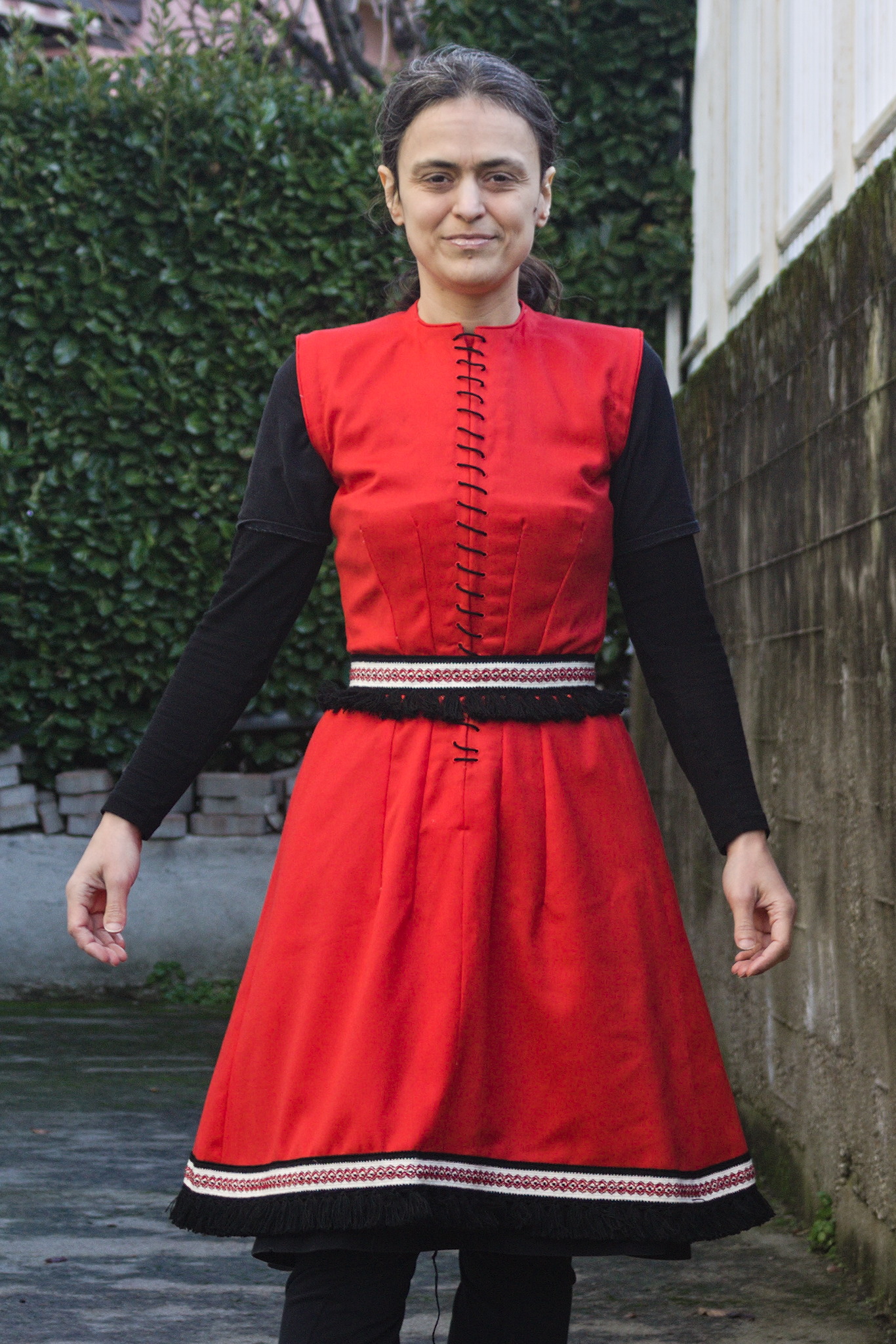 By the influencers on the famous proprietary video platform
By the influencers on the famous proprietary video platform Anyway, my brain suddenly decided that I needed a red wool dress, fitted
enough to give some bust support. I had already made a
Anyway, my brain suddenly decided that I needed a red wool dress, fitted
enough to give some bust support. I had already made a  I knew that I didn t have enough fabric to add a flounce to the hem, as
in the cotton dress, but then I remembered that some time ago I fell for
a piece of fringed trim in black, white and red. I did a quick check
that the red wasn t clashing (it wasn t) and I knew I had a plan for the
hem decoration.
Then I spent a week finishing other projects, and the more I thought
about this dress, the more I was tempted to have spiral lacing at the
front rather than buttons, as a nod to the kirtle inspiration.
It may end up be a bit of a hassle, but if it is too much I can always
add a hidden zipper on a side seam, and only have to undo a bit of the
lacing around the neckhole to wear the dress.
Finally, I could start working on the dress: I cut all of the main
pieces, and since the seam lines were quite curved I marked them with
tailor s tacks, which I don t exactly enjoy doing or removing, but are
the only method that was guaranteed to survive while manipulating this
fabric (and not leave traces afterwards).
I knew that I didn t have enough fabric to add a flounce to the hem, as
in the cotton dress, but then I remembered that some time ago I fell for
a piece of fringed trim in black, white and red. I did a quick check
that the red wasn t clashing (it wasn t) and I knew I had a plan for the
hem decoration.
Then I spent a week finishing other projects, and the more I thought
about this dress, the more I was tempted to have spiral lacing at the
front rather than buttons, as a nod to the kirtle inspiration.
It may end up be a bit of a hassle, but if it is too much I can always
add a hidden zipper on a side seam, and only have to undo a bit of the
lacing around the neckhole to wear the dress.
Finally, I could start working on the dress: I cut all of the main
pieces, and since the seam lines were quite curved I marked them with
tailor s tacks, which I don t exactly enjoy doing or removing, but are
the only method that was guaranteed to survive while manipulating this
fabric (and not leave traces afterwards).
 While cutting the front pieces I accidentally cut the high neck line
instead of the one I had used on the cotton dress: I decided to go for
it also on the back pieces and decide later whether I wanted to lower
it.
Since this is a modern dress, with no historical accuracy at all, and I
have access to a serger, I decided to use some dark blue cotton voile
I ve had in my stash for quite some time, cut into bias strip, to bind
the raw edges before sewing. This works significantly better than bought
bias tape, which is a bit too stiff for this.
While cutting the front pieces I accidentally cut the high neck line
instead of the one I had used on the cotton dress: I decided to go for
it also on the back pieces and decide later whether I wanted to lower
it.
Since this is a modern dress, with no historical accuracy at all, and I
have access to a serger, I decided to use some dark blue cotton voile
I ve had in my stash for quite some time, cut into bias strip, to bind
the raw edges before sewing. This works significantly better than bought
bias tape, which is a bit too stiff for this.
 For the front opening, I ve decided to reinforce the areas where the
lacing holes will be with cotton: I ve used some other navy blue cotton,
also from the stash, and added two lines of cording to stiffen the front
edge.
So I ve cut the front in two pieces rather than on the fold, sewn the
reinforcements to the sewing allowances in such a way that the corded
edge was aligned with the center front and then sewn the bottom of the
front seam from just before the end of the reinforcements to the hem.
For the front opening, I ve decided to reinforce the areas where the
lacing holes will be with cotton: I ve used some other navy blue cotton,
also from the stash, and added two lines of cording to stiffen the front
edge.
So I ve cut the front in two pieces rather than on the fold, sewn the
reinforcements to the sewing allowances in such a way that the corded
edge was aligned with the center front and then sewn the bottom of the
front seam from just before the end of the reinforcements to the hem.
 The allowances are then folded back, and then they are kept in place
by the worked lacing holes. The cotton was pinked, while for the wool I
used the selvedge of the fabric and there was no need for any finishing.
Behind the opening I ve added a modesty placket: I ve cut a strip of red
wool, a strip of cotton, folded the edge of the strip of cotton to the
center, added cording to the long sides, pressed the allowances of the
wool towards the wrong side, and then handstitched the cotton to the
wool, wrong sides facing. This was finally handstitched to one side of
the sewing allowance of the center front.
I ve also decided to add real pockets, rather than just slits, and for
some reason I decided to add them by hand after I had sewn the dress, so
I ve left opening in the side back seams, where the slits were in the
cotton dress. I ve also already worn the dress, but haven t added the
pockets yet, as I m still debating about their shape. This will be fixed
in the near future.
Another thing that will have to be fixed is the trim situation: I like
the fringe at the bottom, and I had enough to also make a belt, but this
makes the top of the dress a bit empty. I can t use the same fringe
tape, as it is too wide, but it would be nice to have something smaller
that matches the patterned part. And I think I can make something
suitable with tablet weaving, but I m not sure on which materials to
use, so it will have to be on hold for a while, until I decide on the
supplies and have the time for making it.
Another improvement I d like to add are detached sleeves, both matching
(I should still have just enough fabric) and contrasting, but first I
want to learn more about real kirtle construction, and maybe start
making sleeves that would be suitable also for a real kirtle.
Meanwhile, I ve worn it on Christmas (over my 1700s menswear shirt with
big sleeves) and may wear it again tomorrow (if I bother to dress up to
spend New Year s Eve at home :D )
The allowances are then folded back, and then they are kept in place
by the worked lacing holes. The cotton was pinked, while for the wool I
used the selvedge of the fabric and there was no need for any finishing.
Behind the opening I ve added a modesty placket: I ve cut a strip of red
wool, a strip of cotton, folded the edge of the strip of cotton to the
center, added cording to the long sides, pressed the allowances of the
wool towards the wrong side, and then handstitched the cotton to the
wool, wrong sides facing. This was finally handstitched to one side of
the sewing allowance of the center front.
I ve also decided to add real pockets, rather than just slits, and for
some reason I decided to add them by hand after I had sewn the dress, so
I ve left opening in the side back seams, where the slits were in the
cotton dress. I ve also already worn the dress, but haven t added the
pockets yet, as I m still debating about their shape. This will be fixed
in the near future.
Another thing that will have to be fixed is the trim situation: I like
the fringe at the bottom, and I had enough to also make a belt, but this
makes the top of the dress a bit empty. I can t use the same fringe
tape, as it is too wide, but it would be nice to have something smaller
that matches the patterned part. And I think I can make something
suitable with tablet weaving, but I m not sure on which materials to
use, so it will have to be on hold for a while, until I decide on the
supplies and have the time for making it.
Another improvement I d like to add are detached sleeves, both matching
(I should still have just enough fabric) and contrasting, but first I
want to learn more about real kirtle construction, and maybe start
making sleeves that would be suitable also for a real kirtle.
Meanwhile, I ve worn it on Christmas (over my 1700s menswear shirt with
big sleeves) and may wear it again tomorrow (if I bother to dress up to
spend New Year s Eve at home :D )
 A new release of my mixed collection of things package
A new release of my mixed collection of things package  The following contributors got their Debian Developer accounts in the last two months:
The following contributors got their Debian Developer accounts in the last two months:
 This week I stumbled across a footgun in the
This week I stumbled across a footgun in the  I just noticed that I wrote this a decade ago, and then never got round to posting
it, so thought I might kick it off now to mark my tentative return to blogging.
At the
I just noticed that I wrote this a decade ago, and then never got round to posting
it, so thought I might kick it off now to mark my tentative return to blogging.
At the 



 A while ago, I saw
A while ago, I saw 

 Dormitory room in Zostel Ernakulam, Kochi.
Dormitory room in Zostel Ernakulam, Kochi.
 Beds in Zostel Ernakulam, Kochi.
Beds in Zostel Ernakulam, Kochi.
 Onam sadya menu from Brindhavan restaurant.
Onam sadya menu from Brindhavan restaurant.
 Sadya lined up for serving
Sadya lined up for serving
 Sadya thali served on banana leaf.
Sadya thali served on banana leaf.
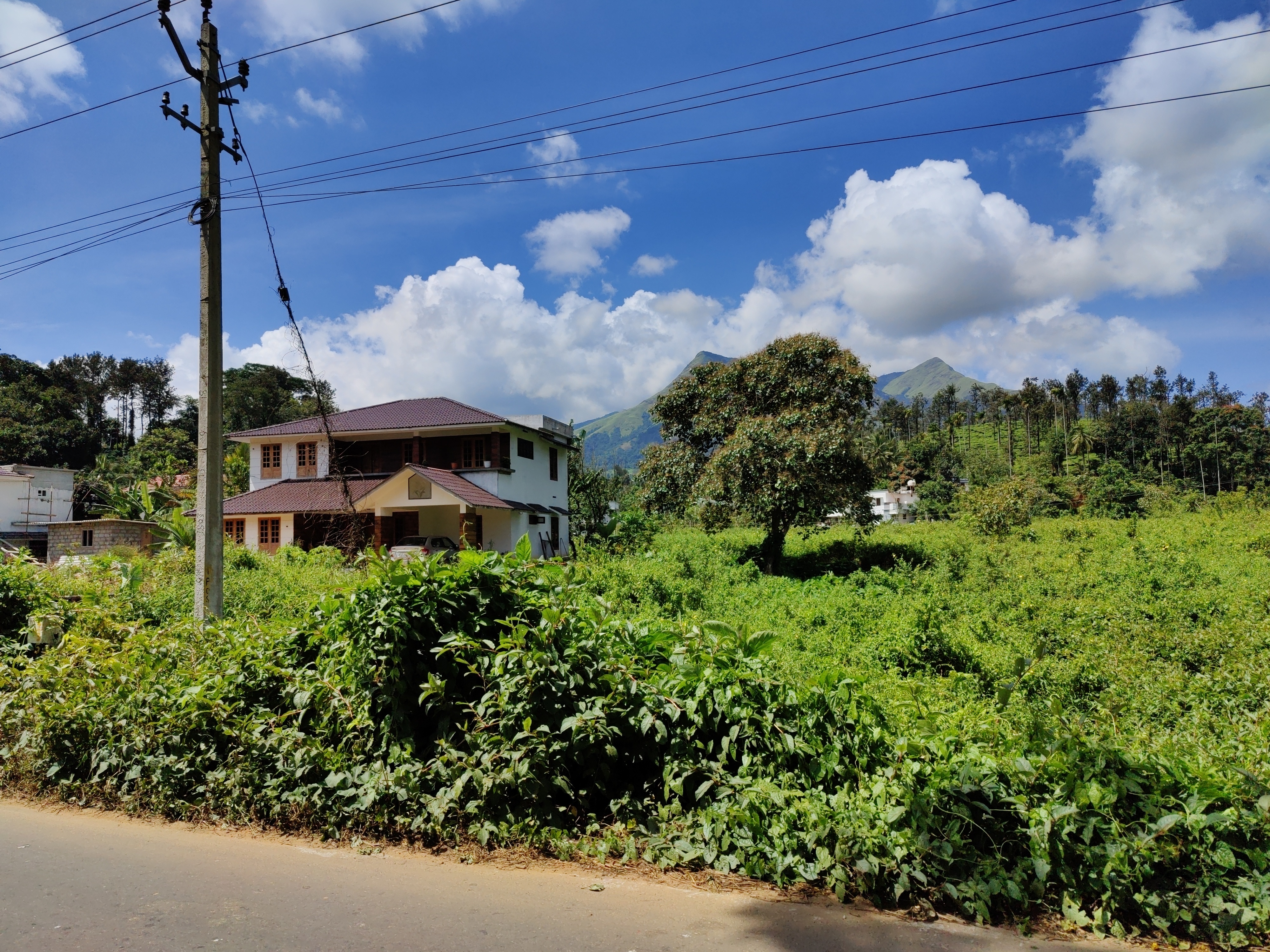 We were treated with such views during the Wayanad trip.
We were treated with such views during the Wayanad trip.
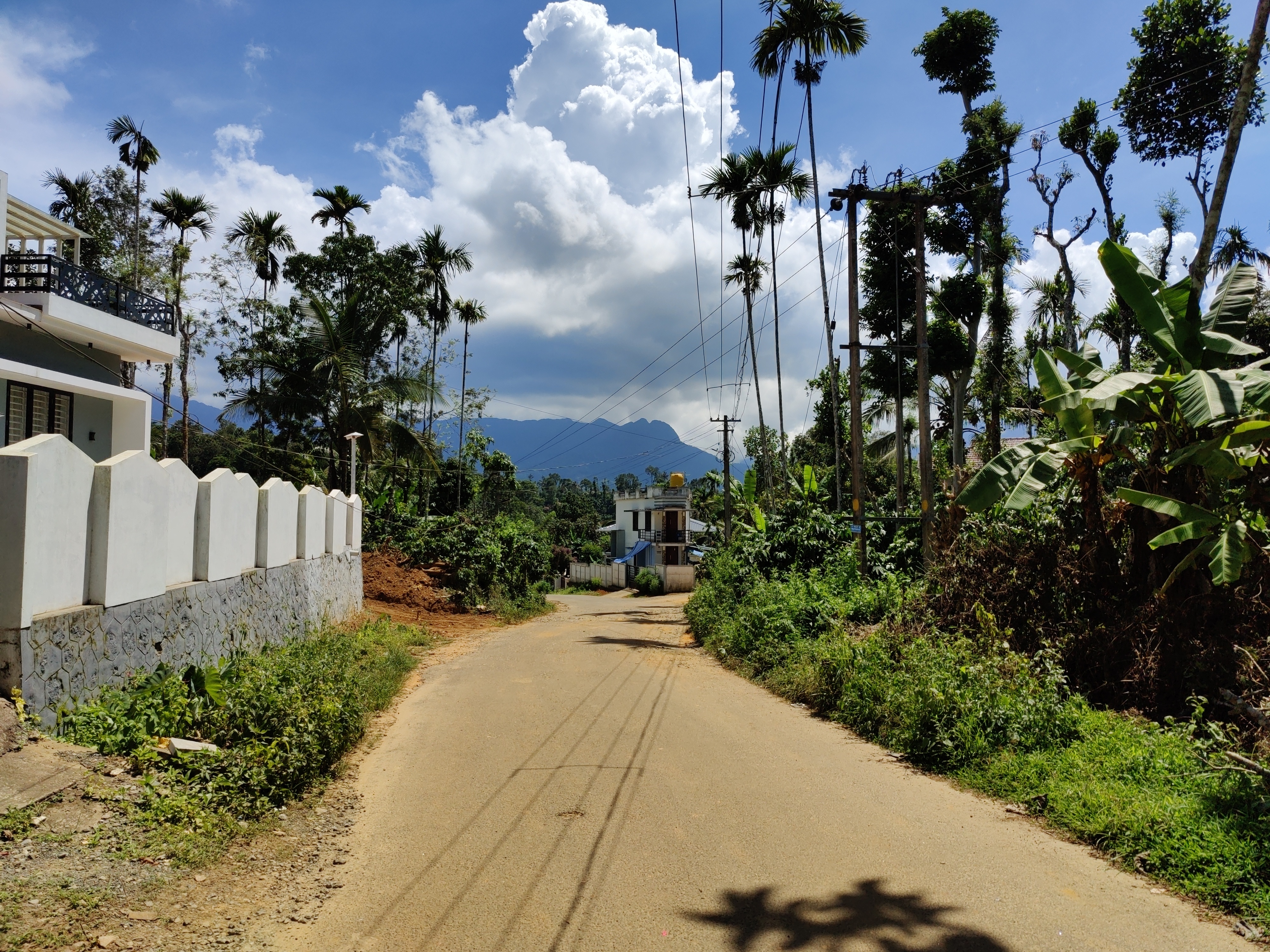 A road in Rippon.
A road in Rippon.
 Entry to Kanthanpara Falls.
Entry to Kanthanpara Falls.
 Kanthanpara Falls.
Kanthanpara Falls.
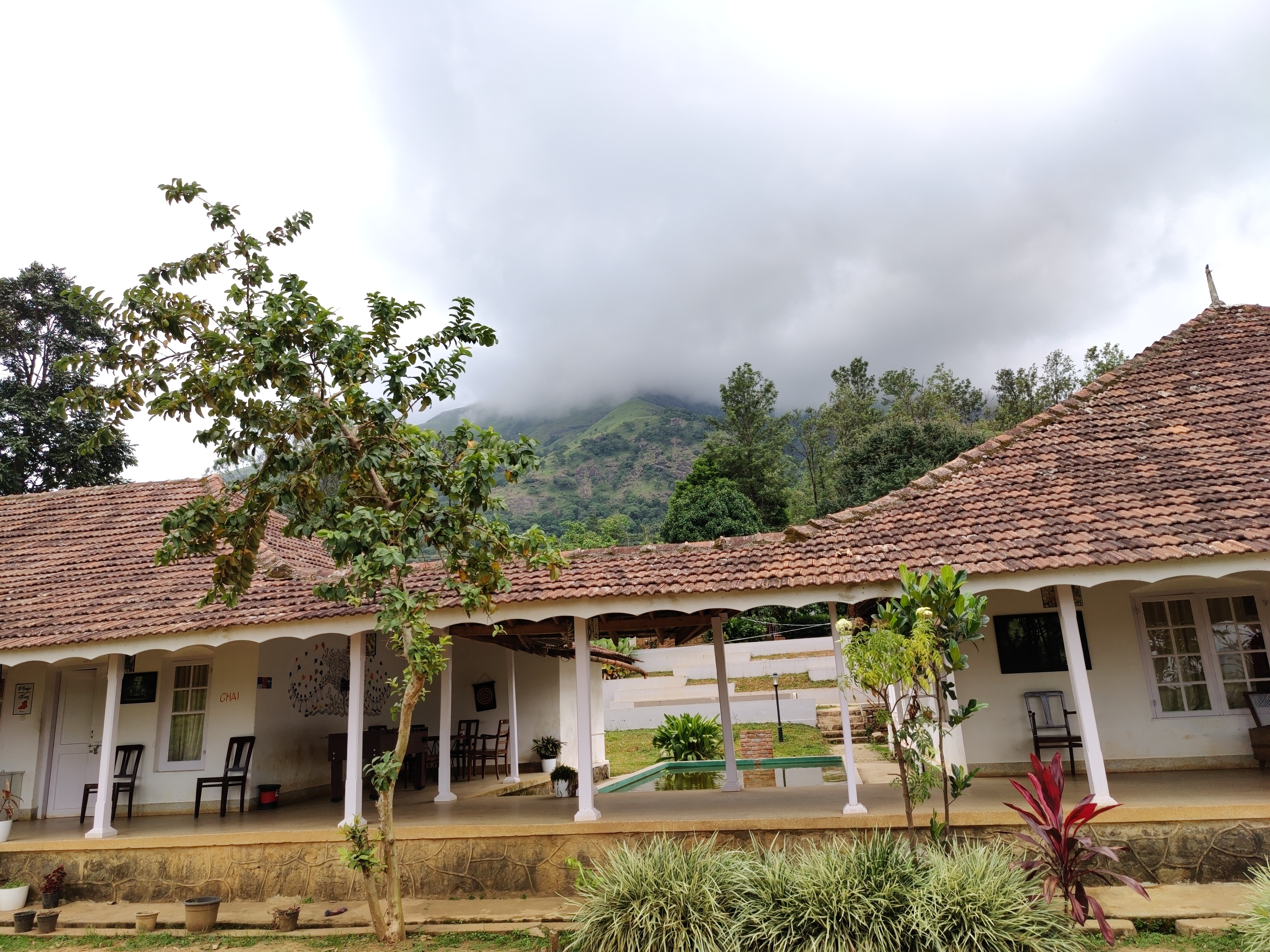 A view of Zostel Wayanad.
A view of Zostel Wayanad.
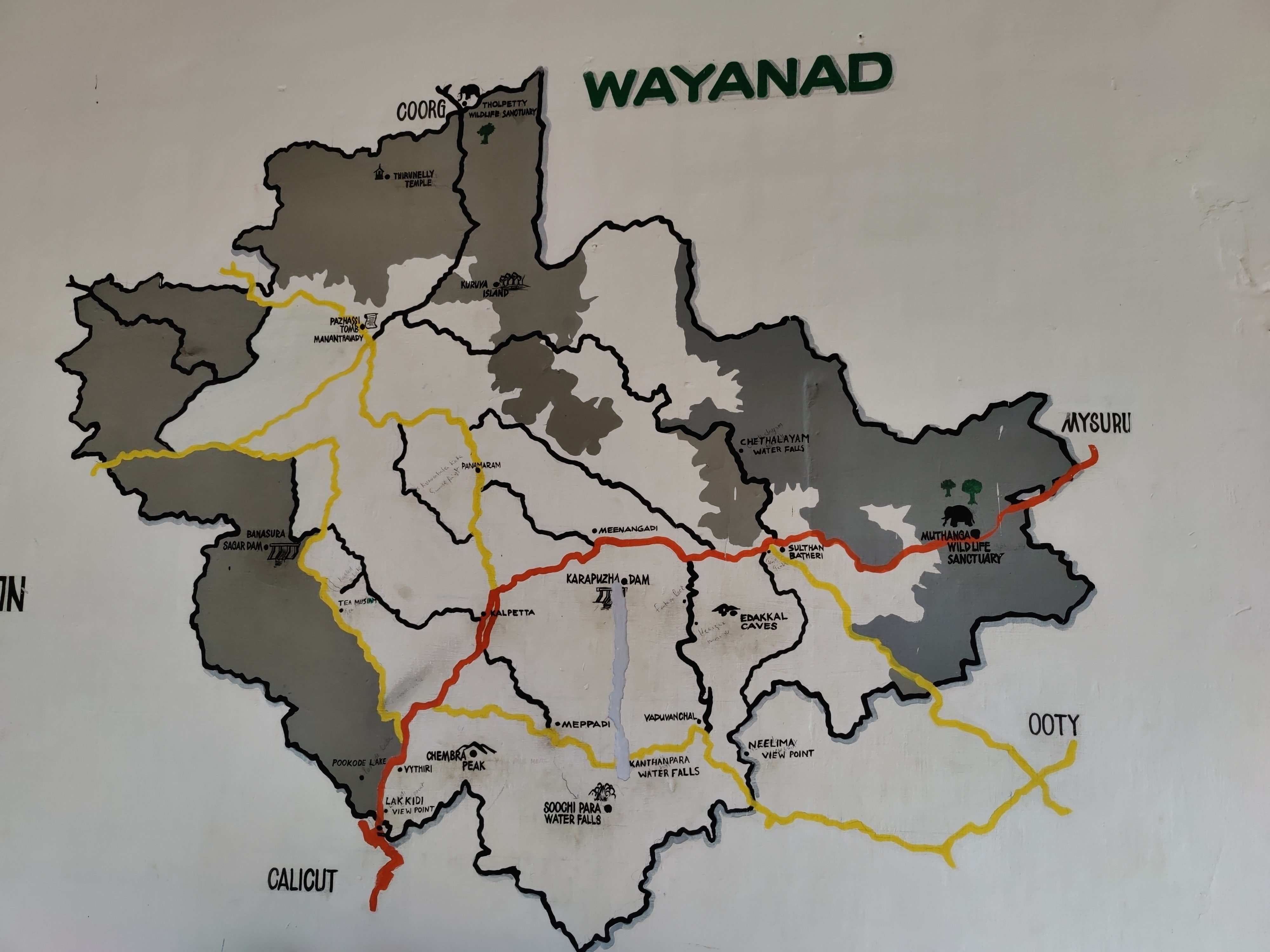 A map of Wayanad showing tourist places.
A map of Wayanad showing tourist places.
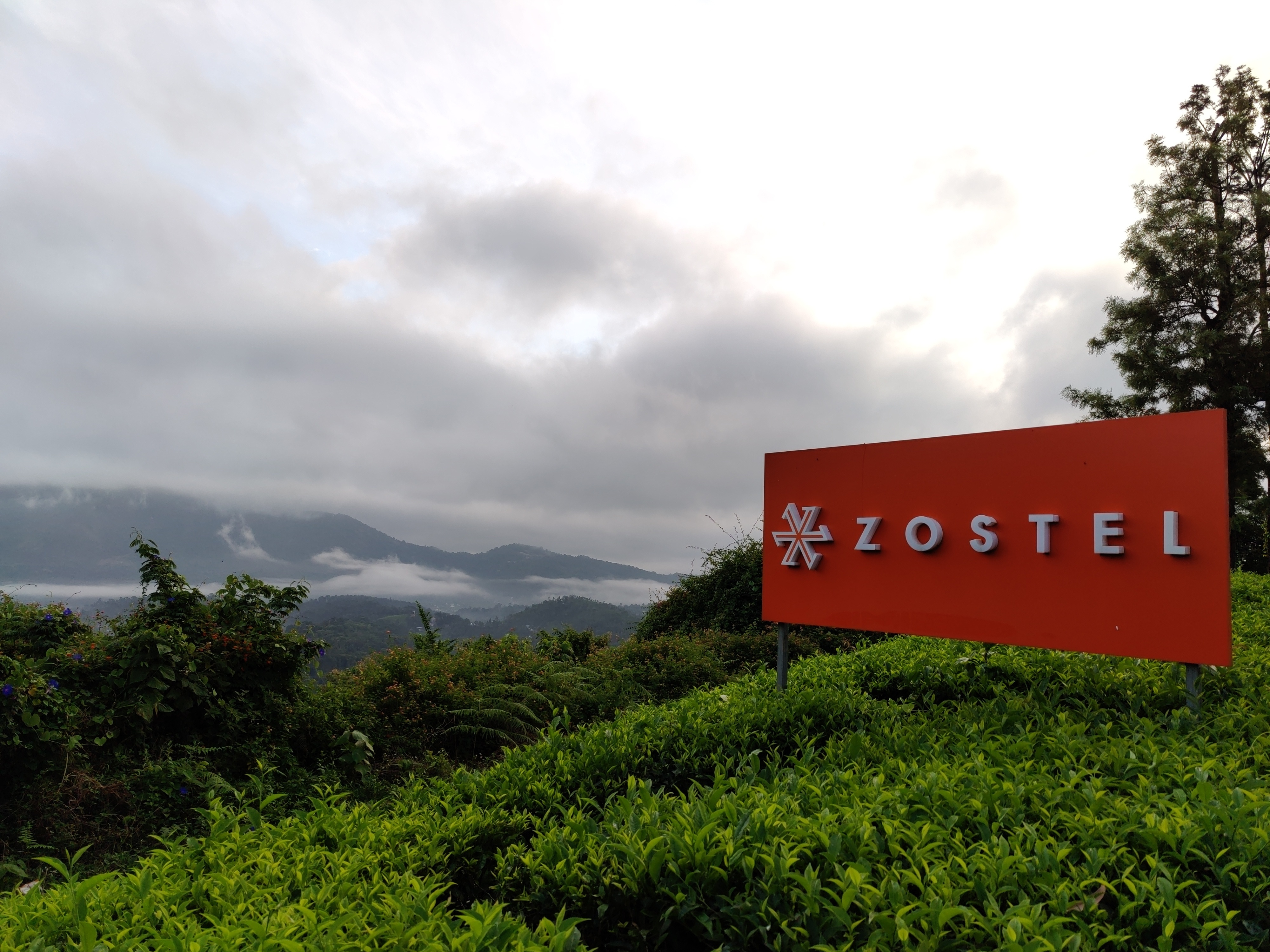 A view from inside the Zostel Wayanad property.
A view from inside the Zostel Wayanad property.
 Terrain during trekking towards the Chembra peak.
Terrain during trekking towards the Chembra peak.
 Heart-shaped lake at the Chembra peak.
Heart-shaped lake at the Chembra peak.
 Me at the heart-shaped lake.
Me at the heart-shaped lake.
 Views from the top of the Chembra peak.
Views from the top of the Chembra peak.
 View of another peak from the heart-shaped lake.
View of another peak from the heart-shaped lake.
